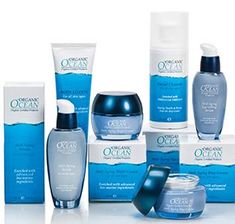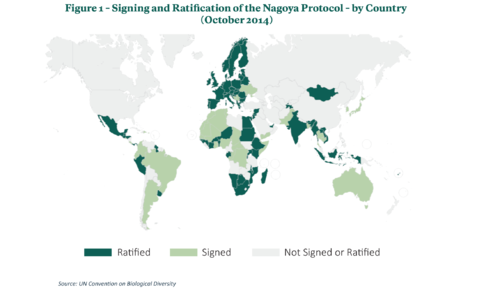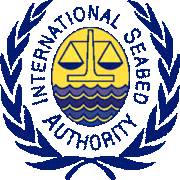Legal framework for access to genetic resources
Marine biodiscovery relies on the accessibility of marine organisms, the Marine Genetic Resources (MGR). The legal landscape surrounding the access to and utilization of marine genetic resources (MGR) have changed following the ratifications of the Nagoya protocol from 2010. Recent activities and papers raise awareness of the legal frameworks relevant for the marine scientific community since scientists are often less aware of the potential challenges of collecting MGR.[1]
Of particular relevance in this regard are the Convention on Biological Diversity (CBD) and its Nagoya Protocol on Access to Genetic Resources and the Fair and Equitable Sharing of Benefits (ABS) Arising from their Utilization, as well as the United Nations Convention on the Law of the Sea (UNCLOS). The CBD and its Nagoyta protocol encouraging the ABS-mechanism (Access and benefit-sharing) together with the UNCLOS investigate how these new, legal frameworks impact the marine scientific research. The extent of these impacts depends on the purpose of the performed research and on the area where the MGR were collected.
Signing and Ratification of the Nagoya Protocol - by country (October 2014)[2]
The Nagoya Protocol was adopted on the 29th of October 2010 as an extra agreement to the CBD. This took place at the tenth meeting of the Conference of the Parties (COP 10) in Nagoya, Japan; it has entered into force on 12 October 2014. All signatories of the Nagoya Protocol are obliged to have a national regime which meets global standards, thereby enabling users to know what to expect whenever they wish to access and utilize MGR.).[3]
The Convention on Biological Diversity and the Nagoya Protocol
The three major objectives of the Nagoya Protocol are
1. biodiversity conservation;
2. the sustainable use of its resources;
3. a fair sharing of benefits arising from the exploitation of their natural resources: further implementing the CBD’s ABS mechanism.
Next to this, genetic resources that underlie the traditional knowledge of indigenous people need to be protected legally as well as the well being of these communities.[4]
The benefit-sharing agreements are not just an ethical practice but are a legal obligation. This implies possible consequences in case of not living up to the mutually agreed terms such as suspension or even cessation of the biodiscovery process, fines, inability to apply for a patent or to commercialize and so on. The benefit-sharing does not always include monetairy benefits (payments and royalties), most of the times the benefits resulting from these resources are non-monetary, such as the sharing of results; the participation of nations in product development; contributions to education; joint ventures, capacity-building and so on. The protocol emphasizes that these benefits should be focused as much as possible on the conservation and durable use of the biodiversity. The marine genetic resources that are typically exploited include plants, animals and microbes, carrying potentially useful genetic material. Users of these resources include universities, research institutes and private companies operating in diverse divisions such as biotechnology, pharmaceuticals, fisheries, cosmetics, biofuels, nutraceuticals and so on.[5] In the Nagoya Protocol ‘using’ the genetic reasources means the process of examining their andvantageous properties and using those qualities for scientific knowledge, understanding and commercial production. Recently biochemical compositions became included under the extent of ABS in order to create a more legal certainty.



Pharamaceuticals, fisheries and cosmetics are some examples of divisions that profit by marine genetical resources.
Compliance requirements
When a person or an institution demands acces to a genetic resource, the prior informed consent (PIC) of the country disposing of the resource needs to be obtained in order to be granted access. The user and the providing country need to agree on mutually agreed terms (MAT). These include issues such as access conditions, material transfer rights, changes of intent, terms on benefit-sharing arising from this resource, terms on third-party use and so on. The competent national authority (CNA) to officially grant PIC to accessing MGR (in a written form) is the administration appointed by the state. Through these MAT a greater legal certainty and transparency will be created for both parties, this way the Protocol encourages the conservation and sustainable use of the genetic resources and thus enhances the contribution of biodiversity to human development and health.
The United Nations Convention on the Law of the Sea
The law of the sea is strongly rooted, it has evolved through centuries of tranditions and conventional rules. The United Nations Convention on the Law of the Sea (UNCLOS) was adopted in 1982, it includes those customary rules together with some novel additions. The UNCLOS is a global framework which defines the boundaries of the jurisdiction of a state and regulates the activities happening in that state, including maritime scientific research (MSR). Because of this, a state has the authority to impose access restrictions concerning MSR within its jurisdiction.
Fig 6. The logo of the United Nations Convention on the Law of the Sea.
For scientists it is crucial to be aware of the distinct regimes regarding access to MGR under both the CBD and its Nagoya Protocol on the one hand and under UNCLOS on the other hand. Correctly applying the UNCLOS in a certain state does not ensure compliance with the national ABS regime under the CBD and its Nagoya Protocol in that state and vice versa. The situation is likely to result in the application of two different procedures for the same activity.
The UNCLOS and the Nagoya Protocol are thus overlapping frameworks for the collection of samples. When the marine genetic material is obtained via an ‘ex-situ’ collection such as a biorepository, the accessibility will be defined by the CBD and its Nagoya Protocol. On the other hand, when the material is accessed ‘in situ’ via a sampling expedition, the UNCLOS provisions concerning MGR will apply as well.
Marine scientific research under the UNCLOS
The UNCLOS grants diverse rights to the coastal states depending on the particular maritime areas. The state has full authority of the territorial waters (including the regulation of MGR), the jurisdiction however extends far beyond those 12 nm (= nautical miles, here about 13.8 miles): within the 200 nm of the exclusive economic zone (EEZ) as well as as on the continental shelf (up to 350 nm) the coastal states are given exclusive rights concerning the protection of the environment or the exploration and exploitation of natural resources. These rights grant coastal states the jurisdiction over benthic species of the seabed, for species living in the water column however the Freedom of the High Seas applies.
A state needs to be notified six month in advance of a project taking place within its jurisdictional boundaries, It also has the right to demand the participation of national observers in that project. The national competent authority for granting permission to access certain maritime zones is often the Navy because the procedures conducted are more related to the surveillance of ongoing traffic and activities rather than to the regulation of access to those genetic resources. A state thus has the power to reject a request for access to and exploitation of a resource when this might affect the surrounding marine environment rather badly.[1]
Conclusion
What should be kept in mind is that PIC and MAT are required for any activity regarding MGR which takes place within the 200 nm of the EEZ of a state (which can extend up to 350 nm on the continental shelf) because the state has the jurisdiction over all natural resources occurring in that area. Two permits granted by different authorities are required to carry out an activity: a permission to access and exploit MGR and an authorization to legally conduct marine research within the state’s jurisdiction. The negotiation of agreements according to the Nagoya Protocol will provide more legal certainty and will help avoiding misuse of genetic resources and will enhance the benefits arising from the utilization of these resources for the parties involved.
However, some uncertainties still remain concerning the Nagoya Protocol, such as the distribution of MGR in areas consisting of different countries or in cases where the same MGR can be found within and beyond a state’s jurisdictions. The free access to genetic resources beyond national jurisdiction is likely to change soon as present discussions are heading towards elaborating a supplementary agreement to the UNCLOS with respect to the ABS of MGR in international waters.
References
- ↑ 1.0 1.1 Laura E. Lallier et al., Access to and use of marine genetic resources: understanding the legal framework, Nat. Prod. Rep., 2014, 31, 612
- ↑ https://www.cbd.int/abs/
- ↑ https://www.cbd.int/cop/cop-11/doc/cop-11-media-press-brief-abs.pdf
- ↑ http://cisdl.org/public/docs/legal/The%20Nagoya%20Protocol%20-%20Status%20of%20Indiginous%20and%20Local%20Communities.pdf
- ↑ http://www.oecd.org/sti/biotech/Session%202%20Burton%20final.pdf

